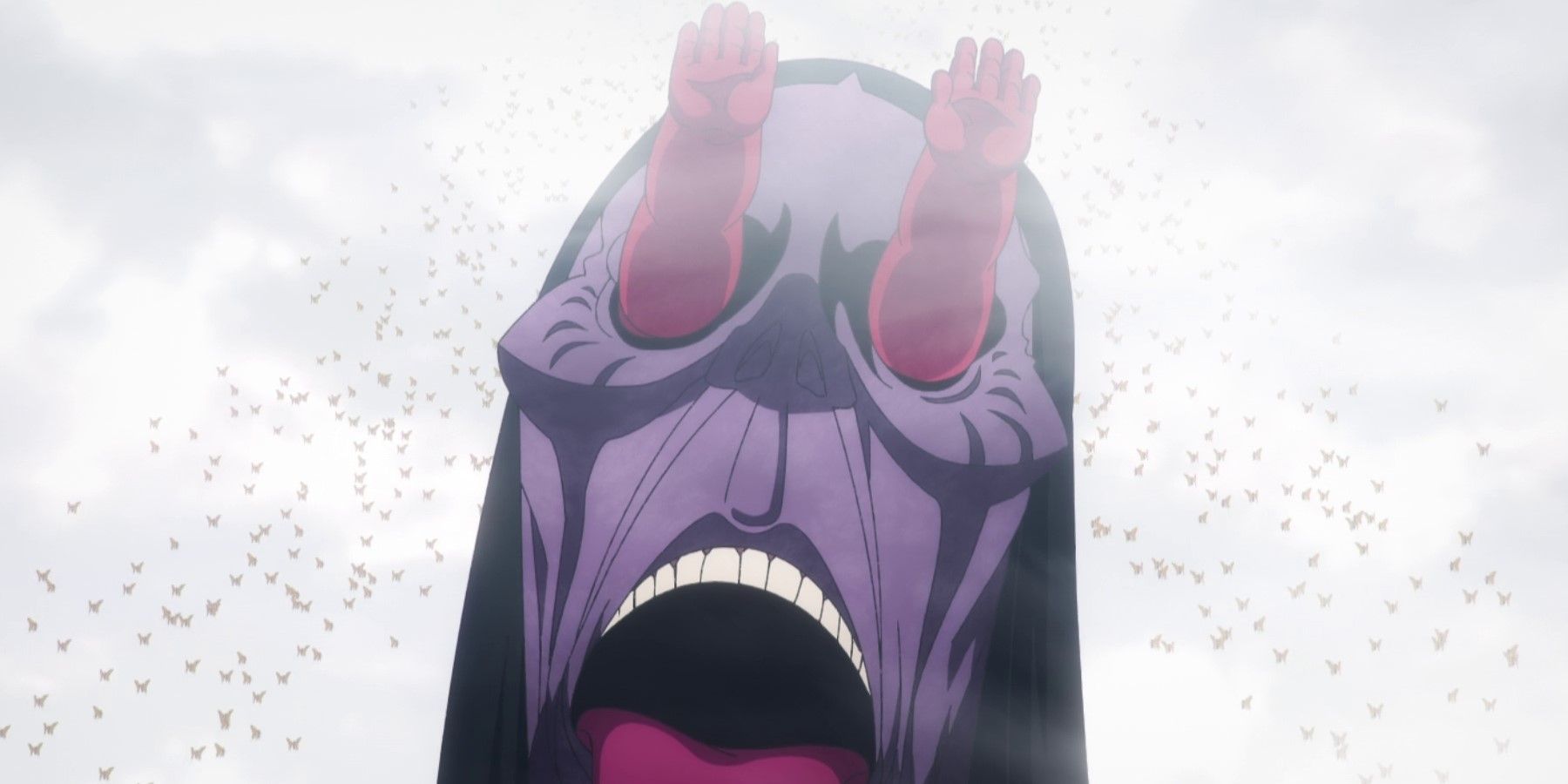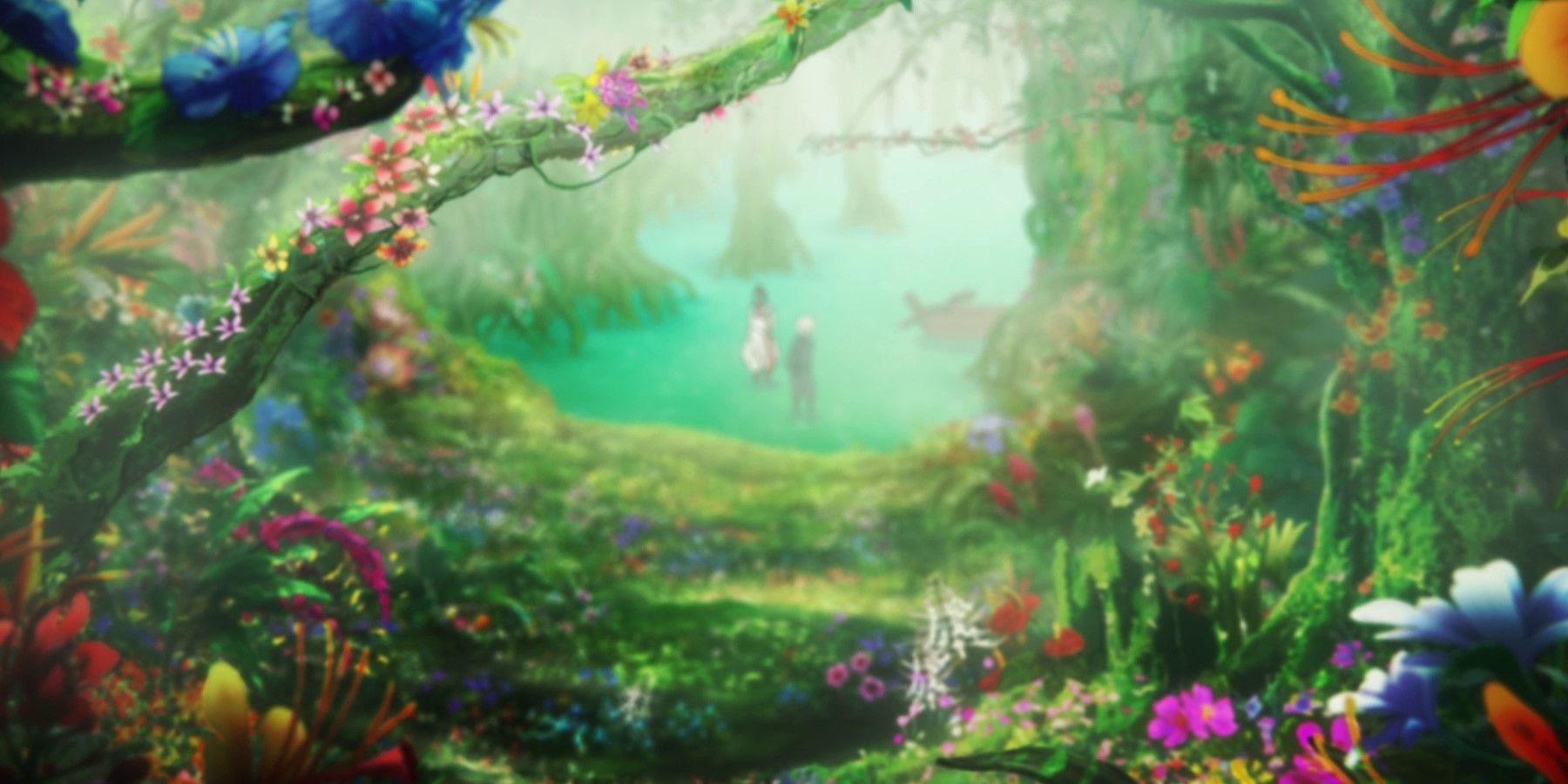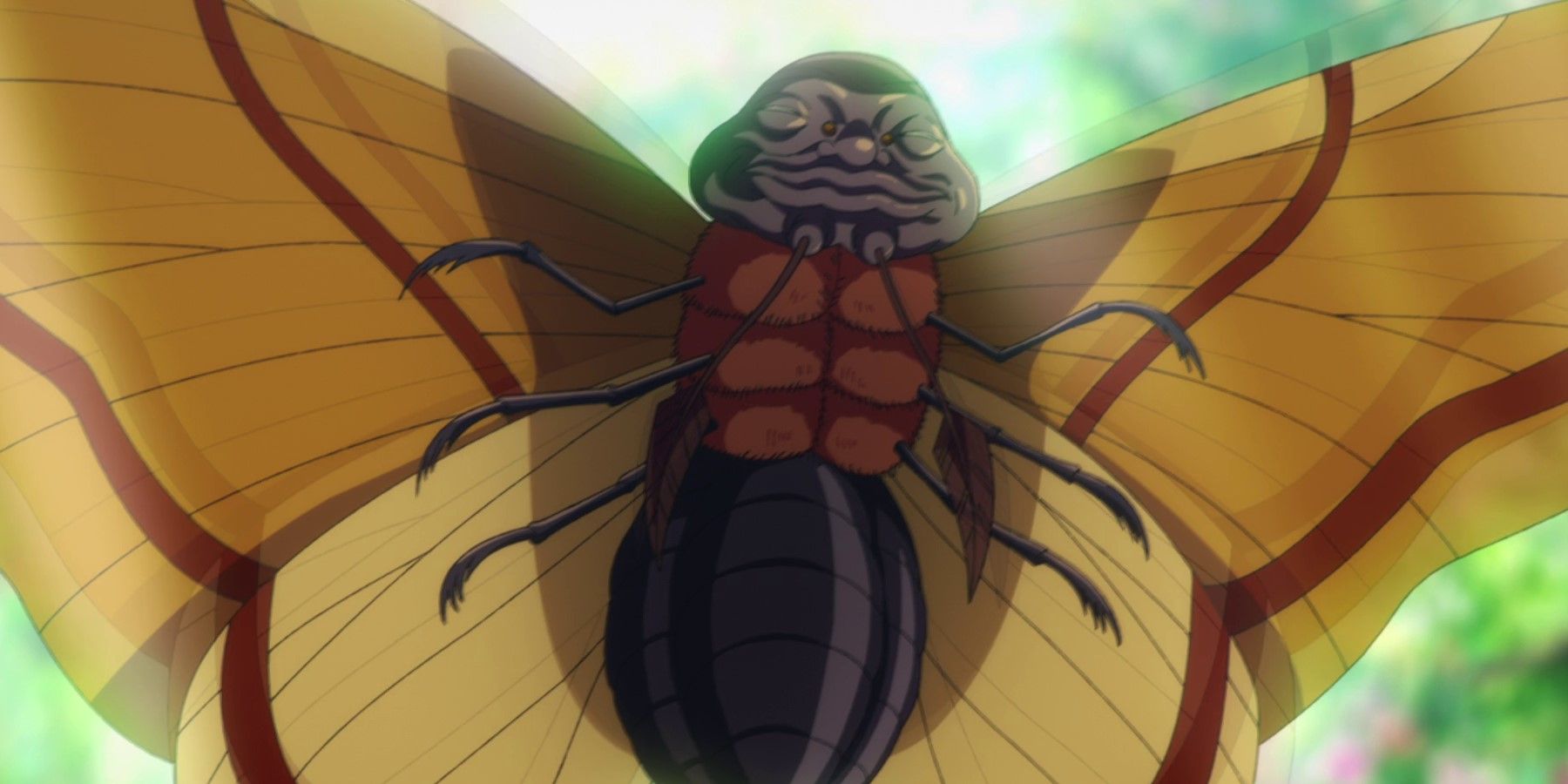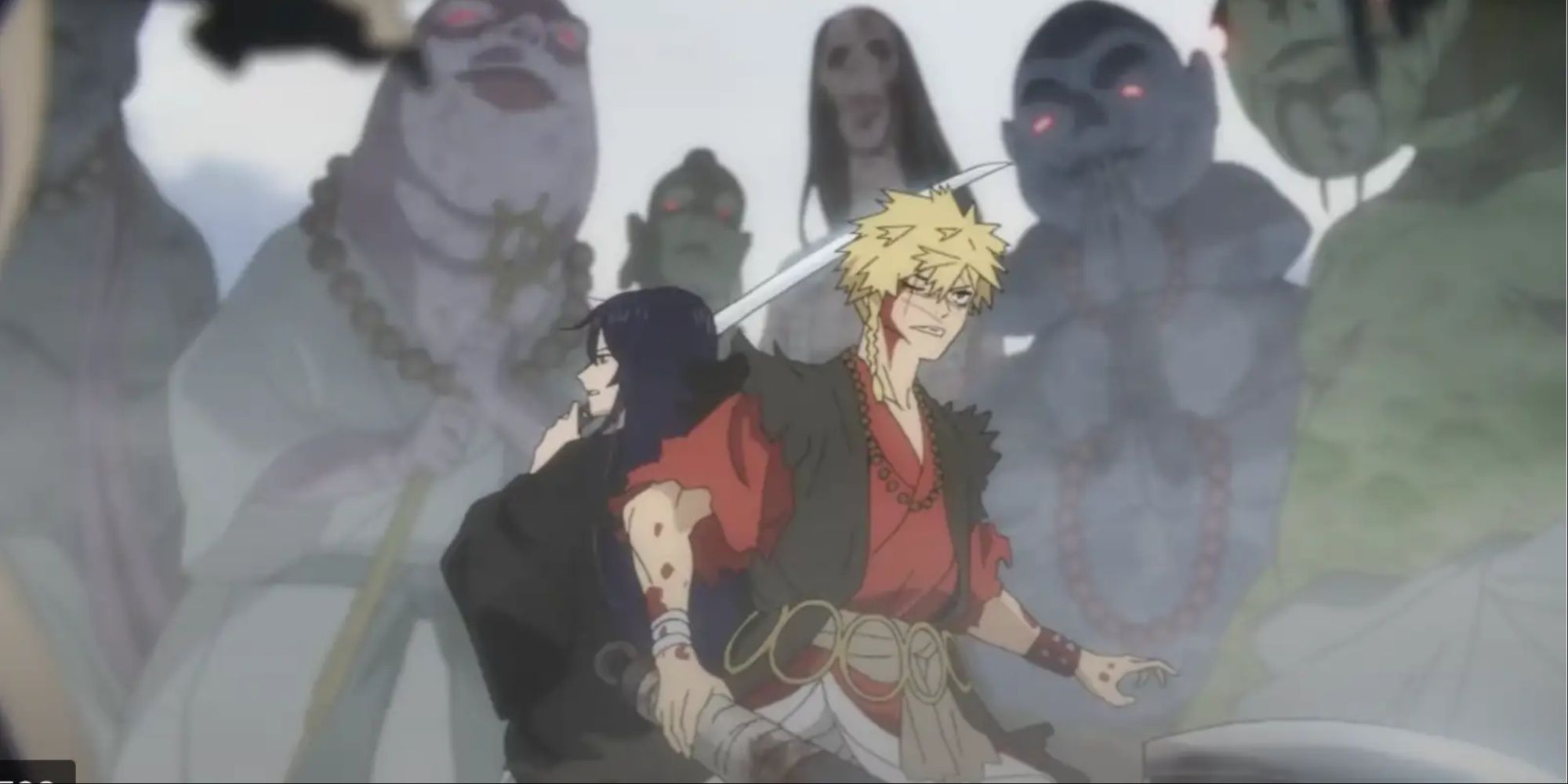The seventh episode of Hell's Paradise: Jigokuraku served as the beginning in a shift in tone and direction for the series, setting into motion the series' true plot with the introduction of new characters, a brief glimpse at the major antagonists of the series and a further understanding of the various mechanics that are at play on Shinsenkyо̄ – or rather, Kotaku. The trove of exposition that was the seventh episode brought forth several new concepts, but also brought up various new questions. The arboreal being known as Hо̄ko explained the structure of the island, as well as the nature of the inhuman sentries that are littered across the island's outer limits.
These ghastly creatures that appear to be badly malformed experiments borne from attempts to marry completely different creatures in a single body have been Kotaku's biggest threat to the Vanguard Party thus far, but they're only the beginning. So, what exactly are these beings; the so-called "Sо̄shin"?
Shinsenkyо̄
The term used to refer to the island by the majority of the characters (particularly those who don't actually come from there) is "Shinsenkyо̄". According to VIZ Media translator Caleb Cook, the term is the Japanese word for the Chinese mythological version of paradise, which is inhabited by hermits or "sennin" (for example, "Kame-Sennin"). In Chinese myth, a location known as Mount Penglai is inhabited by immortals; a land thought to have trees that bear fruit that grant immortality to those that eat them. Historically, the emperor Qin Shi Huang, founder of the Qin Dynasty and first emperor of a unified China, is said to have sought the Elixir of Life as he aged, and in one case, he sent a man named Xu Fu (Jofuku) on an expedition to find the land where the fabled Mount Penglai is; however, after his second expedition to find the island, Xu Fu never returned. Anyway, the island itself is heavily influenced by spiritual and religious imagery, particularly that of Buddhist and Taoist leaning; however, what is especially important to note is the fact that much of the nomenclature encountered on the island is of Chinese origin or translated into Japanese.
What is known as Mount Penglai is referred to as "Hо̄rai" in Japanese. When explaining the structure of the island, Hо̄ko tells Gabimaru and his party of three concentrically connected parts to the island: Eishū, the outermost layer teeming with abominations and vivid blooming flowers; Hо̄jo, the middle part where a society once lived now populated solely by Hо̄ko and Mei; and finally, Hо̄rai, the centre of it all where the secrets of eternal life are kept. The fabled Elixir of Life, referred to by Hо̄ko as "Tan" is kept somewhere in Hо̄rai, but it is also the place where beings the tree-man referred to as "gods" – the Tensen – reside. As we understand, Hell's Paradise: Jigokuraku carries heavy mythological influences of both Chinese and Japanese origins, and the similarities are evident in the structure, atmosphere and elements found on Kotaku. The abominations found in Eishū are unnatural, grotesque creatures reminiscent of chimeras, and they are referred to by Hо̄ko as Sо̄shin; however, what he does not provide is any information regarding their origin.
Zaòshén
The Sо̄shin are the lower-class monsters found on Shinsenkyо̄. Their appearance and temperament completely differs depending on the type encountered, but they all share an eerie and grotesque appearance. They attack on sight and seem to have no higher intelligence (for the most part). Some Soshin are capable of speech; however, such instances have rarely been seen. The word "Sо̄shin" is the Japanese pronunciation of the Mandarin "Zaòshén", both of which are written 竈神, with the kanji for stove or hearth seen in Demon Slayer protagonist Tanjiro Kamadо's surname; followed by the kanji for "god". This comes from the story of the Kitchen God from Chinese mythology, whose tragic story usually involves his eventual death by hearth fire.
These creatures aren't exactly what anyone imagines when they think of the gods that inhabit literal paradise; however, when Hо̄ko is asked about this discrepancy, he tells Yamada Asaemon Senta that he has never left the island, so he would have no conception of gods other than the ones he knows inhabit the island. The Sо̄shin act as guardians by killing any humans they encounter on the island, and as Senta observes, the Sо̄shin tend to be dressed in some manner of religious garb that makes them seem like "poorly thought-out deities". The presence of religious artifacts, accessories and structures both on the bodies of the Sо̄shin, and seen across the island are evidence of some kind of religious aspect to the understanding of life on Kotaku.
Garden of Sinners
Granted the existence of actual immortals upon the island, the understanding of the major threat that has been the Sо̄shin as merely the grunts in a much grander operation is only beginning to be explored as of episode 8. The Sо̄shin are the lowest-ranked of the beings found on the island, displaying a general mindlessness aside from when they are responding to orders from the Tensen. They are only capable of speech on select occasions, such as when they witness their kind being killed, condemning such actions as "sin" and seeing outsiders to the island as "sinners", adding more to the religious overtones seen across the island. These creatures answer to the will of the Tensen like pawns, and are not allowed to set foot in the sacred Hо̄rai.




